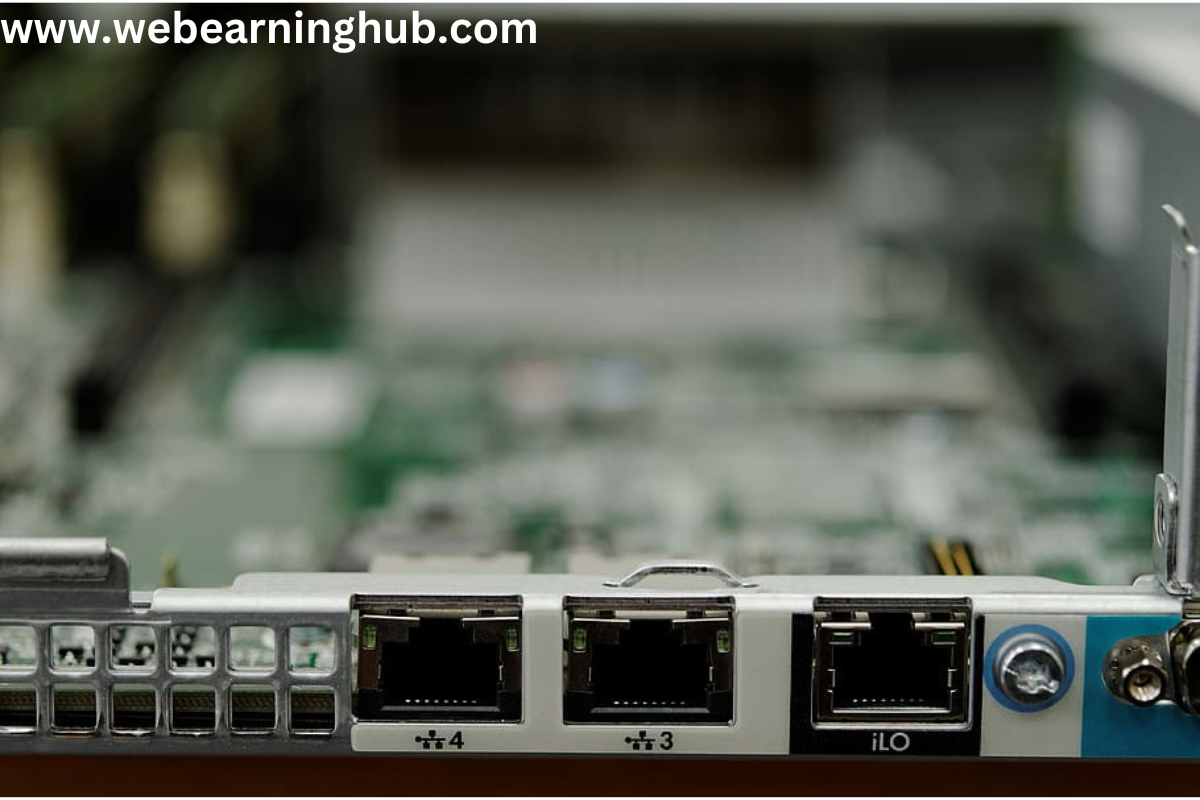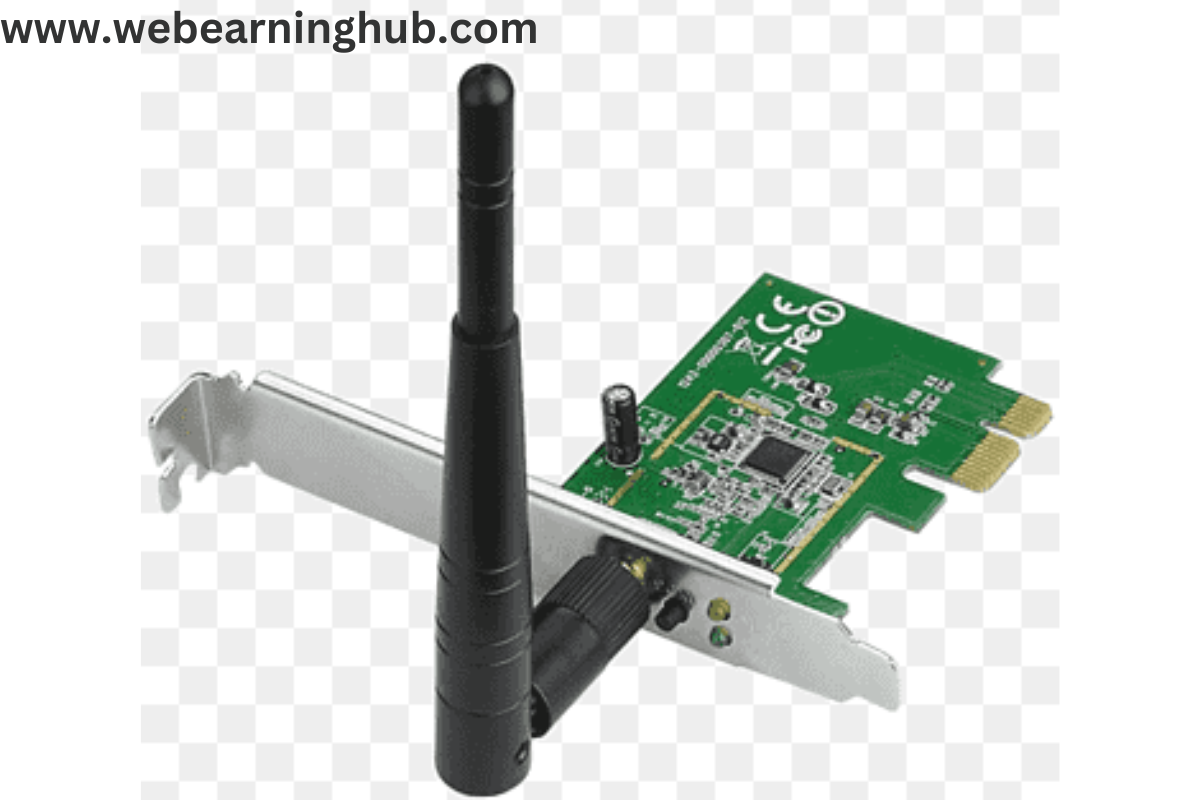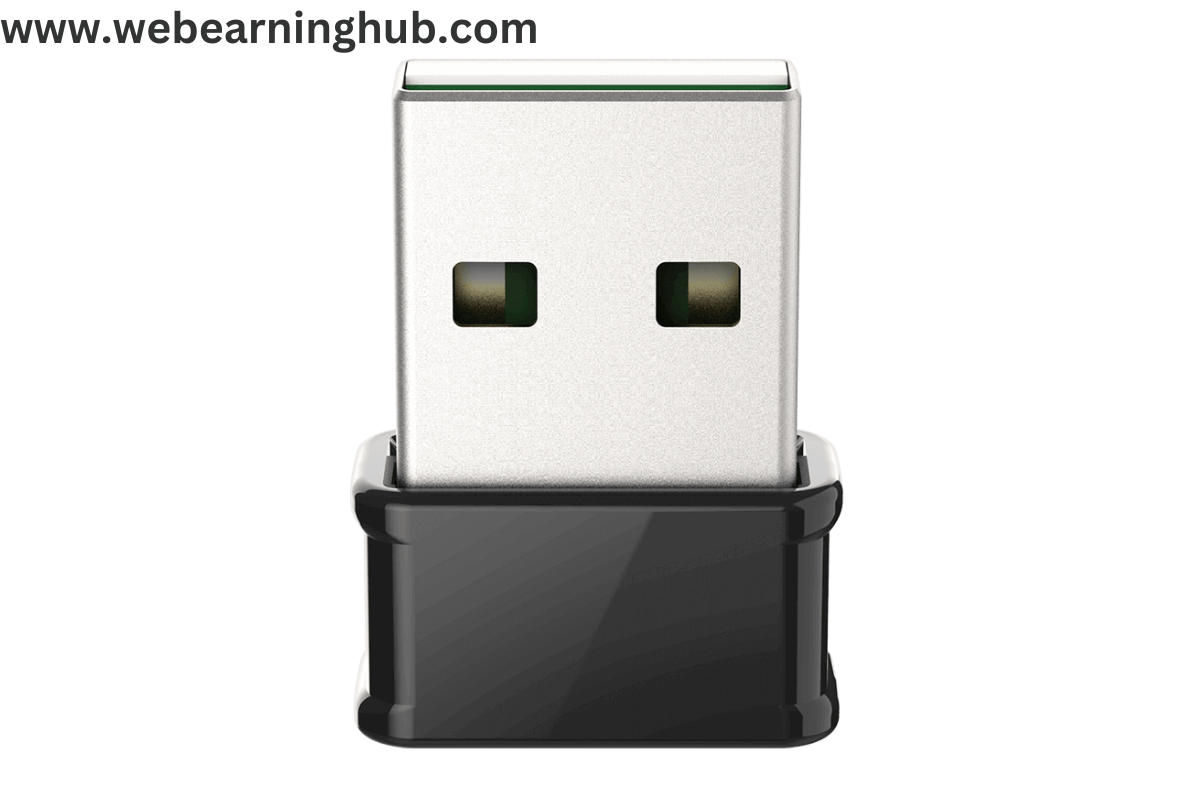Computer Network Devices
The computer network devices are the devices that allows to connect and communicate data through it. It helps to establish connection between devices. Here we are going to know about some basic computer networking devices.
NIC (Network Interface Card)-
The main and basic requirement of a node is NIC card. Without a NIC card you can not connect over a network. NIC card is also known as Ethernet card or LAN card. Most of the nodes are come with NIC card built in but those device where it is not integrated we can easily add the NIC card through slots or other ports. There are two types of NIC card which are –
- Wired NIC card
- Wireless NIC card
Wired NIC Card-
A wired NIC (Network Interface Card) is a hardware component that enables a computer to connect to a network using a wired connection. It is also referred to as a network adapter or Ethernet card. The NIC card is responsible for facilitating communication between the computer and the network infrastructure.
Here are some key points about wired NIC cards:
- Function: The primary function of a wired NIC card is to provide a physical connection between a computer and a network. It allows data to be transmitted and received over a wired network, typically using Ethernet cables.
- Connectivity: Wired NIC cards commonly use Ethernet ports, such as RJ-45 connectors, to establish a connection to the network. These cards support various Ethernet standards, such as 10/100/1000 Mbps (megabits per second) or even higher speeds like 10 Gbps (gigabits per second).
- Installation: Wired NIC cards are typically installed internally on a computer’s motherboard. They can be integrated into the motherboard itself or installed as expansion cards into available PCI, PCI Express, or other compatible slots on the motherboard.
- Compatibility: Wired NIC cards are widely compatible with different operating systems, including Windows, macOS, and Linux. They are designed to work with standard networking protocols and can be used with a variety of network devices, such as switches, routers, and modems.
- Performance: Wired connections provided by NIC cards generally offer higher data transfer speeds and lower latency compared to wireless connections. This makes them ideal for scenarios that require fast and reliable network connectivity, such as gaming, large file transfers, or video streaming.
- Advantages: Wired NIC cards offer several advantages over wireless connections, including greater stability, lower susceptibility to interference, and consistent bandwidth. They also eliminate the need for configuring and managing wireless network settings.
- Disadvantages: The primary drawback of wired NIC cards is the physical limitation imposed by the need for a wired connection. It requires the presence of Ethernet cables and restricts mobility compared to wireless connections.
Overall, wired NIC cards remain a popular choice for desktop computers, servers, and other devices where a reliable and high-speed network connection is essential.

Wireless NIC Card-
A wireless NIC (Network Interface Card), also known as a wireless network adapter or Wi-Fi card, enables a computer to connect to a wireless network. It provides the necessary hardware for wireless communication, allowing data to be transmitted and received over Wi-Fi frequencies.
Here are some key points about wireless NIC cards:
- Function: A wireless NIC card allows a computer to connect to a wireless network by transmitting and receiving data using Wi-Fi technology. It acts as an interface between the computer and the wireless network infrastructure, such as routers or access points.
- Connectivity: Wireless NIC cards utilize wireless standards, such as Wi-Fi 802.11a/b/g/n/ac/ax, to establish a connection with wireless networks. These cards usually have an antenna or multiple antennas to send and receive wireless signals.
- Installation: Wireless NIC cards can be installed internally or externally, depending on the type of computer or device. Internal wireless NIC cards are inserted into expansion slots on the motherboard, similar to wired NIC cards. External wireless NIC cards are typically connected to the computer via USB ports.
- Compatibility: Wireless NIC cards are designed to work with various operating systems, including Windows, macOS, and Linux. They are compatible with standard Wi-Fi protocols and can connect to Wi-Fi networks provided by routers or access points that support the same Wi-Fi standards.
- Performance: The performance of wireless NIC cards can vary based on factors such as the Wi-Fi standard supported, the number of antennas, and the quality of the wireless signal. Higher-end wireless NIC cards that support the latest Wi-Fi standards can provide faster speeds and better range.
- Advantages: Wireless NIC cards offer the advantage of mobility, allowing devices to connect to Wi-Fi networks without the need for physical cables. They are suitable for situations where wired connections are not practical or feasible, such as laptops, smartphones, and tablets. Wireless NIC cards also enable the creation of ad-hoc networks for peer-to-peer communication.
- Disadvantages: Wireless connections provided by NIC cards may be subject to interference from other wireless devices, walls, or distance limitations. They may also experience slower speeds and higher latency compared to wired connections, particularly in crowded Wi-Fi environments.
Wireless NIC cards are widely used in devices that require wireless connectivity, offering flexibility and convenience for connecting to Wi-Fi networks in homes, offices, public spaces, and other locations with wireless infrastructure.

USB Wireless NIC Card-
A USB wireless NIC (Network Interface Card) is a network adapter that connects to a computer via a USB port and enables wireless network connectivity. It allows devices without built-in Wi-Fi capability to connect to Wi-Fi networks by providing the necessary hardware for wireless communication.
Here are some key points about USB wireless NIC cards:
- Function: A USB wireless NIC card serves the same purpose as a built-in Wi-Fi adapter by enabling a computer to connect to wireless networks. It allows data transmission and reception over Wi-Fi frequencies, establishing a wireless connection to routers or access points.
- Connectivity: USB wireless NIC cards utilize USB ports to establish a connection with a computer. They typically have an integrated antenna or multiple antennas to transmit and receive wireless signals.
- Installation: Installing a USB wireless NIC card is simple. You plug the card into an available USB port on the computer, and the operating system usually automatically detects and installs the necessary drivers. Some USB wireless NIC cards may come with installation software that you need to run before use.
- Compatibility: USB wireless NIC cards are designed to be compatible with various operating systems, including Windows, macOS, and Linux. They work with standard Wi-Fi protocols and can connect to Wi-Fi networks provided by routers or access points that support the same Wi-Fi standards.
- Performance: The performance of USB wireless NIC cards depends on several factors, including the supported Wi-Fi standard (e.g., 802.11a/b/g/n/ac/ax), the number of antennas, and the quality of the device. Higher-end USB wireless NIC cards that support the latest Wi-Fi standards can provide faster speeds and better range.
- Advantages: USB wireless NIC cards offer the advantage of mobility and convenience. They are useful for devices that do not have built-in Wi-Fi, such as desktop computers or older laptops, allowing them to connect to wireless networks without the need for internal hardware modifications. USB wireless NIC cards are also portable and can be easily moved between devices.
- Disadvantages: USB wireless NIC cards may have limitations compared to built-in Wi-Fi adapters. They may not provide the same level of performance, signal strength, or range as dedicated internal Wi-Fi hardware. USB bandwidth is also shared among connected devices, so if multiple high-bandwidth USB devices are in use simultaneously, it may impact network performance.
USB wireless NIC cards are commonly used to add wireless connectivity to devices that lack built-in Wi-Fi capabilities or to upgrade the wireless capabilities of existing devices. They provide a convenient solution for connecting to Wi-Fi networks, especially in situations where wired connections are not practical or feasible.

MAC Address-
A MAC (Media Access Control) address, also known as a hardware address or physical address, is a unique identifier assigned to a network interface card (NIC) by the manufacturer. It is a 48-bit or 64-bit address that is assigned to the network adapter’s hardware at the time of manufacturing.
Here are some key points about MAC addresses:
- Unique Identifier: A MAC address serves as a unique identifier for a network interface. No two network interfaces should have the same MAC address. This uniqueness allows network devices to distinguish and communicate with each other on a local network.
- Format: MAC addresses are typically represented as a series of six pairs of hexadecimal digits, separated by colons or hyphens. For example, a MAC address could appear as 00:1A:2B:3C:4D:5E.
- Structure: The MAC address consists of two parts. The first part represents the manufacturer or vendor’s unique identifier, called the Organizationally Unique Identifier (OUI). The second part represents the unique identifier assigned by the manufacturer to the network interface.
- Locally Administered and Universally Administered Addresses: MAC addresses can be classified as either locally administered or universally administered. Universally administered MAC addresses are assigned by the manufacturer, while locally administered MAC addresses can be manually set by the network administrator or user.
- Unicast and Multicast Addresses: MAC addresses can be categorized as unicast, multicast, or broadcast addresses. Unicast addresses are used for one-to-one communication between devices. Multicast addresses are used for one-to-many communication, where data is sent to a group of devices. Broadcast addresses are used to send data to all devices on a network.
- Use in Network Communication: MAC addresses are primarily used at the data link layer of the network protocol stack. They are used to uniquely identify network devices within a local network and facilitate the delivery of data packets between devices.
- MAC Address Filtering: Network devices, such as routers or switches, can use MAC address filtering to control access to a network. By configuring a device to only accept certain MAC addresses, network administrators can restrict network access to authorized devices.
It’s important to note that MAC addresses operate at the local network level and are not routable across the internet. They are specific to the physical network interface and are independent of IP (Internet Protocol) addresses, which are used for network communication at the internet layer of the protocol stack.
Format of MAC Address-
MAC addresses are typically represented in a specific format consisting of six pairs of hexadecimal digits. Each pair represents eight bits, resulting in a total of 48 bits for a standard MAC address. The format is as follows:
XX:XX:XX:XX:XX:XX
Each “XX” represents a two-digit hexadecimal number (0-9, A-F), separated by colons (:). Here’s an example of a MAC address in this format:
AB:CD:EF:12:34:56
The first three pairs (XX:XX:XX) in the MAC address correspond to the OUI (Organizationally Unique Identifier), which identifies the manufacturer or vendor of the network interface card. The remaining three pairs (XX:XX:XX) represent the unique identifier assigned by the manufacturer to the specific network interface.
In addition to the standard 48-bit MAC address format, there is also an extended 64-bit MAC address format used for certain types of network interfaces. The format is the same, with eight pairs of hexadecimal digits instead of six:
XX:XX:XX:XX:XX:XX:XX:XX
This extended format allows for a larger number of unique addresses to accommodate a wider range of network devices.
It’s important to note that the format of a MAC address remains consistent, but the actual values of the digits will vary depending on the specific network interface card.
==============================*************==============================

2 thoughts on “Computer Network Devices”